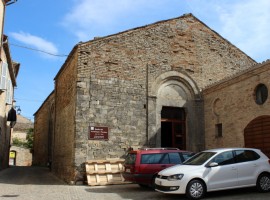
This church is private property. On its side there is a beautiful portal which is from the original 8th century suburban church and pagan inscriptions recycled from even older buildings.
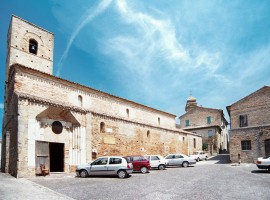
This church has a beautiful portal built in part with recycled Roman columns.
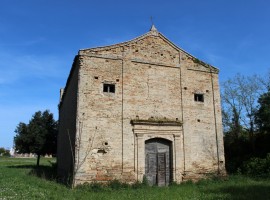
This small church, located just outside the town walls, is a jewel of simplicity and rigorous form. It is located opposite the neoclassical monumental cemetery designed by Monterubbiano architect Luca Galli. Inside the church there is a fresco painted by Giovanni Pagani, father of the more famous Vincenzo.
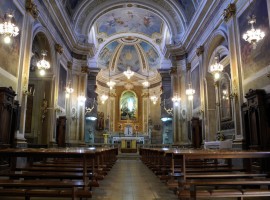
This church was radically transformed in the 18th century. You can admire its important pictorial cycle on the ceiling painted by Della Nave, a 20th century artist who worked on the Petruzzelli Theatre in Bari.
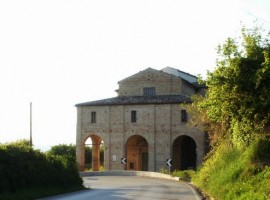
This church was built in 1590 by Msgr. Paolo Pagani in baroque style with a Latin cross plan; it was completed around 1600. There is a beautiful continuous portico on three sides of the church. Cardinal Bandini’s coat of arms is on the travertine central portal. He was the founder of the Brotherhood of the Holy Cross. Inside the church there is a fresco painted by Giovanni Colucci and and two canvases by Martino Bonfini from Patrignone painted in 1639.
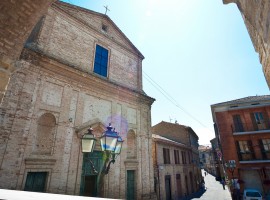
The church of Saint Mary of the Scholars, built in the 18th century on the foundations of the churche of Saint Mary of Mercy which collapsed during an earthquake. It became a collegiate church in 1728 by Pope Benedict XIII’s Papal Brief . The original single nave plan was modified in 1856 when the addition of an apse and two lateral transepts transformed it into a Latin cross plan. The church is particularly beautiful inside and it houses several valuable works of…
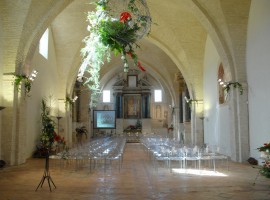
Saint Francis Cultural Centre is a multi-purpose complex realised by recovering and converting a Franciscan convent built in the 13th century. It includes:an auditorium, an archaeological museum, a library and reading room, a exhibition hall, an environmental education centre and a herb garden. It was reopened to the public on 23 September 2007, 10 years after the earthquake which had damaged it considerably. The Centre is an important example of Franciscan convent architecture. It was founded by the Franciscan monks Lucido and Matteo Beati,…
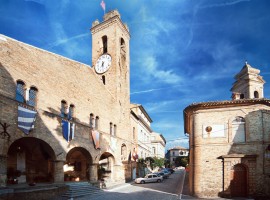
Monterubbiano’s town hall was built in the 14th century in the central hub of the town. It is easy to recognize the 14th century structure when you observe its compactness and uniformity. On the north side you can see the characteristic portico of the raised entrance and note the mullioned windows on the first level with Venetian glass which give the town council meeting room inside a special lighting effect. These mullioned windows were re-opened in the 20th century. The tower which…
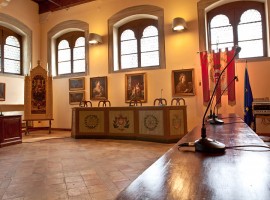
Inside the town council meeting room there is a picture gallery which gathers together works of art which belong to the Town of Monterubbiano. There are approximately twenty paintings, mostly oil on canvas, from the 16th and 17th centuries which have religious and non-religious subjects. The stylistic signature is of the Roman, Emilian and local Marchegian schools of the period. There are also copies of important works by Domenichino, Daniele da Volterra, Botticelli and Carlo Crivelli.
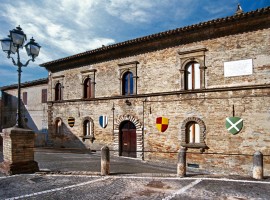
Palazzo Calzecchi Onesti, built between 1553 and 1562, is one of the most significant buildings in Monterubbiano. It has a belvedere garden and a noble façade overlooking the main square, a sure sign of the power of the family from Ravenna. The typical 16th century style is unvaried in the shapes and elements which define the palazzo’s architectural score and they reflect the influence of the most important Tuscan and Roman palazzi. This Renaissance palazzo still belongs to and is inhabited by the…